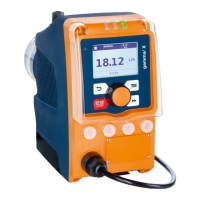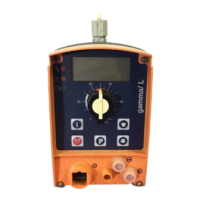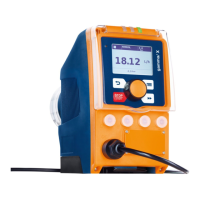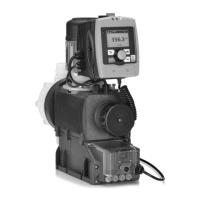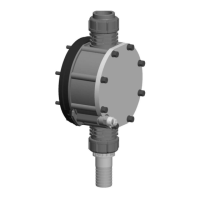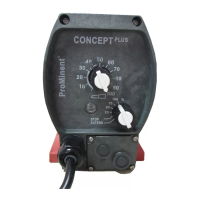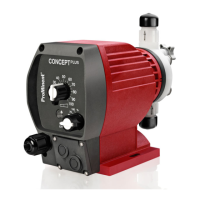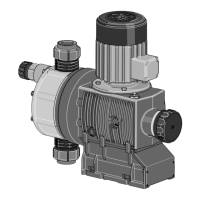The example is intended to provide the programmer with a couple
of “programming obstacles” that he might not immediately see:
Com‐
mand
Time event Additional
parameter
Action Additional
parameter
Comment
01 Config I/O 1 Input, reacts
when closing
Start Delayer 1 When a contact
closes between
pins 1 and 4 at
“Config I/O”
socket, this
starts delayer 1
02 Config I/O 1 Input, reacts
when closing
Start Delayer 2 When a contact
closes between
pins 1 and 4 at
“Config I/O”
socket, this
starts delayer 2
03 Config I/O 1 Input, reacts
when closing
Start Delayer 3 When a contact
closes between
pins 1 and 4 at
“Config I/O”
socket, this
starts delayer 3
04 Init Halt Pump stops as
soon as the
timer is acti‐
vated
05 Delayer 1 after 60 sec Close Config I/O
2
Pins 2 and 4 of
the “Config I/O”
socket act like a
normally closed
contact – ena‐
bling you to con‐
trol a device
06 Delayer 2 after 120 sec Manual 12,000 l/h and
80 % stroke
length
Pump runs after
120 s at 12,000
strokes/h and 80
% stroke length
07 Delayer 3 after 180 sec Halt Pump stops
after 180 s
08 Delayer 3 after 180 sec Open Config I/O
2
Pins 2 and 4 of
the “Config I/O”
socket act like a
normally open
contact – ena‐
bling you to con‐
trol a device
Explanations:
n If 1 time event (trigger) is to trigger 3 actions that are to have
delays of different lengths, then you need to start 3 delayers
and not just 1 - see instructions 01 to 03.
n If several actions are to be performed after the same delay
time, then you need to write exactly as many instructions –
with the same time event (instructions 07 and 08).
Example - to avoid errors
Set up /
‘Menu’
90

